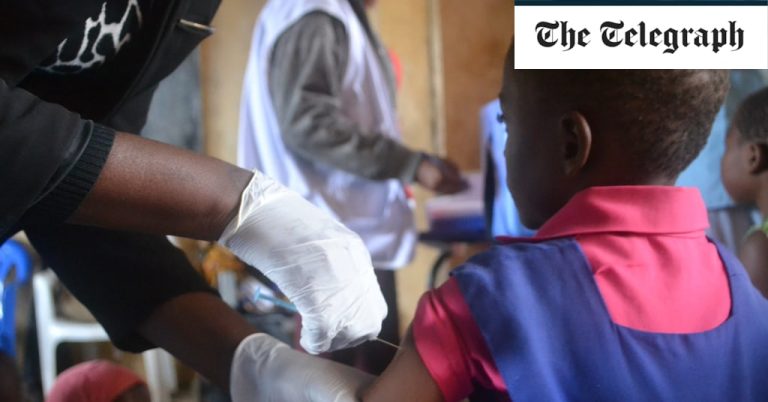The world has a remarkable opportunity to eliminate a cancer for the first time in history.
In January, Public Health Scotland found zero cases of cervical cancer among women who were vaccinated against human papillomavirus (HPV) – the virus that causes 95 per cent of cervical cancer cases – as adolescents. With a vaccine this effective, the UK has a real chance of making cervical cancer elimination a reality and has set the goal of doing so by 2040.
But in other parts of the world, the road to cervical cancer elimination is tougher. Approximately 90 per cent of cervical cancer deaths occur in low- and middle-income countries, with the highest burden in Africa and Latin America. Across these regions, more than 100,000 women die from cervical cancer every year. Women living with HPV are six times more likely to develop cervical cancer than other women.
In many low- and middle-income countries, women do not have access to prevention, screening, diagnosis, treatment, and palliative care options that are readily available in high-income countries. Even when cancer is caught early, a nearby hospital with the resources and specialists to treat cervical cancer is not a guarantee. And the cost, as well as the physical and mental impact of treatment, can be overwhelming.
HPV vaccines can prevent this suffering; however, limited resources, Covid-19 pandemic-related disruptions, and challenges reaching school-aged girls have led to a deep inequity in who receives these life-saving vaccines. It is a tragedy that the lives of women are being cut short by a preventable disease simply because of where they live.
We have the chance to change this. According to the World Health Organization (WHO), one dose of the HPV vaccine offers sufficient protection against cervical cancer, meaning we can reach more girls with the same number of vaccines. A one-dose regimen – which the UK adopted last year – simplifies delivery, reduces costs and alleviates pressure on our health systems. Governments can protect girls more easily and save lives with a single trip to a school to administer the vaccine.
Just last week, WHO’s African Region joined the Region of the Americas in encouraging a one-dose regimen. Out of the 37 countries globally that have announced a switch to a one-dose regimen, 23 of them are in our two regions. We are hoping that even more countries will follow suit so we can protect more girls than ever before. Where feasible and affordable, countries may be able to expand their vaccination programs to include boys and older age groups to further reduce the prevalence of HPV in communities and prevent HPV-related cancers that affect men.
There’s another reason we are on the verge of driving major progress against cervical cancer: improved tools for screening and treatment, key pillars of the WHO’s Global Strategy to Eliminate Cervical Cancer. New methods, like self-sampling HPV tests, can help women in resource-poor settings or those living in remote areas ensure cancer is caught early enough to be treated at local health clinics, rather than specialised hospitals or treatment centers.
Now, with incredible life-saving tools and research to guide us in scaling them up, we can work toward a future where no woman anywhere needlessly dies from this disease.
We know that devastating diseases can be eliminated. Africa was declared free of wild poliovirus in 2020 and 19 African countries have eliminated at least one neglected tropical disease. In the last 10 years, the Americas region has eliminated rubella and neonatal tetanus and has a goal of eliminating 30 diseases by 2030.
These efforts required extraordinary commitments – of resources, political will and public health leadership. This week, public health leaders from around the world will gather in Colombia for the first ever Global Cervical Cancer Elimination Forum, giving us a chance to reaffirm our pledge to eliminate cervical cancer as a public health problem.
We need to translate that commitment into concrete action. National leaders need to introduce and scale up HPV vaccination programmes and ensure women have access to effective, affordable screening and treatment. Donors and governments must invest in HPV vaccination programs in low- and middle-income countries.
But the responsibility goes beyond our political leaders. We need health workers and patient advocates – the people with first-hand experience – to emphasise that HPV vaccines are safe and effective and can save lives. We need religious, civil society, and traditional leaders to dispel misinformation and encourage girls and women to get vaccinated and screened. And parents must ensure that their children are not denied access to this extraordinarily effective vaccine.
The health and well-being of the next generation of women depends on all of us. Twenty years ago, a world without cervical cancer was unimaginable. Today, it is within reach.
- Dr Jarbas Barbosa is Director of the Pan American Health Organization and Dr Matshidiso Moeti is WHO Regional Director for Africa
Protect yourself and your family by learning more about Global Health Security
